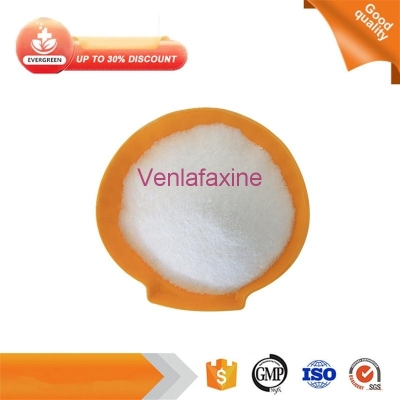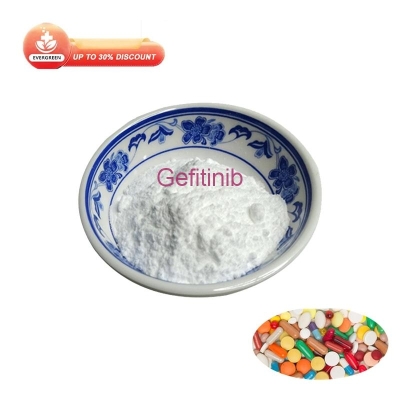-
Categories
-
Pharmaceutical Intermediates
-
Active Pharmaceutical Ingredients
-
Food Additives
- Industrial Coatings
- Agrochemicals
- Dyes and Pigments
- Surfactant
- Flavors and Fragrances
- Chemical Reagents
- Catalyst and Auxiliary
- Natural Products
- Inorganic Chemistry
-
Organic Chemistry
-
Biochemical Engineering
- Analytical Chemistry
- Cosmetic Ingredient
-
Pharmaceutical Intermediates
Promotion
ECHEMI Mall
Wholesale
Weekly Price
Exhibition
News
-
Trade Service
In recent years, genetically modified T-cells have achieved many promising results in the treatment of hematologic malignancies, but have been ineffective in solid tumors and still face many challenges, prompting researchers to turn their attention to other immune cells in the hope of developing new alternative therapies.
November 18, several researchers from Carisma Therapeutics in the United States and the University of Pennsylvania published a review entitled "Macrophage-base views for cancer immunotherapy" at Canser Research, outlining the progress made in macrophage immunotherapy and the rise of chimic antigen-treated macrophage therapy.
cell therapy for solid tumors is a promising method in cancer treatment.
to date, there are three FDA-approved CAR-T products worldwide for the treatment of B-cell malignancies, and more than 200 clinical trials for various blood system malignancies are active/enrolling.
, CAR-T cell therapy progressed more slowly in solid tumors.
for many reasons, for example, CAR-T cells must pass through the abnormal tumor vascular system, which is reduced by adhesion molecules, then experience a mismatch of the homogenization factor/dynogenization factor receptor, and must pass through the dense cellular and substring barrier.
when CAR-T cells enter the tumor micro-environment (TME), the effect cells encounter disadvantages such as hypoxia and acidic environments, expression of immune checkpoint ligations, and large numbers of immunosuppressive cells in TME.
even if CAR-T cells survive TME, the heterogeneity of the surface antigen expression of solid tumors may cause them to escape detection, preventing the tumor from being completely removed.
CAR's research has been focused on exosome T lymphocytes, but in recent years research on cancer treatment using chiline-insulars has expanded to other types of lymphatic immune cells, such as gamma T cells, natural killer T (NKT) cells, and natural killer (NK) cells.
But the efficacy of cell therapy derived from these lymphocytes in the treatment of solid tumors remains elusive, and myelin cells, such as monocytes/macrophages, offer a possible solution to these challenges because they accumulate well in tumors and penetrate dense substring tissue around tumors.
addition, myelin cells can not only directly kill tumors, but also enhance endogenic immunity through antigen delivery, which makes myelin cells a unique choice for the development of anti-tumor cell therapy.
macrophages in cancer have a variety of functions, such as removing cell fragments and pathogens and regulating inflammatory responses.
macrophages are also highly malleable cells that can be switched from one esophageal to another depending on micro-environmental stimuli and signals.
the activation of macrophages is usually reduced to two categories: M1 macrophages and M2 macrophages.
ideophageal characteristics of the polarization of M1 and M2 macrophages (Source: Nature Reviews Immunology) M1 macrophages are induced by cytokines of auxiliary T-cells (Th)1 and can pass through The secretion of cytokines such as TNF alpha, IL-1 beta and IL-12 promotes an inflammatory response mediated by Th1 cells and enhances the recruitment of Th1 cells in inflammatory sites by secreting the degeneration factors CXCL9 and CXCL10.
addition, M1 macrophages can also raise the genes involved in antigen processing and delivery, enhancing the response of T-cells.
M2 macrophages play a key role in normal immune function and steady state, such as stimulating Th2 cell response, eliminating parasites, immunomodulation, wound healing, and tissue regeneration, but some M2 macrophage subpopulations also play a key role in promoting tumor progress.
tumors recruit circulating monocytes and tissue-resident macrophages to TME and polarize them into M2 esoplods, which are then formed into tumor-related macrophages (TAM) through a variety of soluble and mechanical factors.
TAM enhances tumor progression by promoting gene instability, angiogenesic, fibrosis, immunosuppression, invasion and metastasis.
core goal of macrophage-based cancer therapy is to reduce anti-inflammatory macrophages and increase anti-inflammatory (anti-tumor) macrophages.
currently targeting TAM in cancer, strategies to fight TAM-promoting tumor characteristics can be divided into two groups: reducing the number of TAM or changing the function of TAM within TME.
most mature way to reduce TAM survival is by blocking the set-up stimulation factor-1 (CSF-1, also known as M-CSF)/CSF1R axis, which is an important ligation-subject pair for macrophage differentiation and survival.
this method reduces the number of TAM by blocking monocyte differentiation, while also reducing the survival rate of existing TAM.
addition, the use of small molecule inhibitors targeting CSF1R can induce the multipolarization of TAM, from M2 to M1.
also have research teams focusing on targeting other important subjects and reprogramming TAM therapy within TME.
, toll-like bodies (TLRs) are a family of ligs involved in innate immune sensing that can alter the espresso form of macrophages.
these pattern-identifying subjects can react to bacterial particles (such as lipid polysaccharies) or the genomes of bacteria and viruses (such as DNA or RNA), triggering the release of inflammatory cytokines.
injection of TLR astrists into the cavity has been shown to increase the recruitment and immersion of monocytes and induce multipolarization of macrophages.
target for TAM reprogramming is CD40, which binds to cd40L expressed on active T cells.
CD40 signals increase costrulation molecules and inflammatory cytokines, CD40 astrologist antibodies can slow tumor progression and make previously drug-resistant tumors sensitive to chemotherapy.
noteworthy molecule is TGF beta, an anti-inflammatory molecule usually expressed by macrophages during damage repair.
TGF beta reduces TAM's sensitivity to type I interferons and STING inflammatory agents, increasing the difficulty of TM's conversion to inflammatory ideotypes.
block TGF beta in mouse models, while treatment with STING astrologists can help the tumor subside by raising the expression of type I interferon.
, in-place targeting TAM also has great drawbacks.
first and foremost, TME is made up of a large number of immunosuppressive cells with functional redundancy.
these cells all play a role in the progression of the disease, and it is unlikely that TME will change sufficiently by targeting a single cell type to eradicate tumors.
addition, any clinical benefits arising during treatment may be temporary and do not reflect fundamental changes in TME.
in vitro modified macrophages, some research teams have tried to transform macrophages in vitro as an alternative to in vitro-altering TAM.
In the late 1980s, Germany's Andreesen team first treated cancer with in-body cultured macrophages, and 15 patients with advanced cancer who failed standard treatment received the macrophage therapy derived from monocytes.
specifically, the researchers isolated monocytes from white blood cells and cultured them with the patient's autoseedging serum for seven days, dividing them into macrophages.
before giving it to patients, the researchers used IFN-γ to "educate" macrophages and induce them to the M1 esophageal.
these macrophages into the patient by intravenous or celiac injection at a dose of up to 1.7×109 cells per injection.
the tumor did not subside significantly after treatment, some patients remained stable within 6 months of treatment.
7 cases of peri abdominal cancer disappeared after receiving injections of macrophages in the abdominal cavity.
7 out of 15 patients had an increase in IL-6 in the serum, suggesting that therapy induced an inflammatory response.
, no side effects were reported except low fever and abdominal discomfort after celiac injections.
later studies used a similar method to produce IFN-γ-activated macrophages, MAK cells, which showed anti-tumor activity in the cell line in in-body and preclinical models, and the treatment of macrophages appeared to be safe, with no reports of high levels of toxicity associated with treatment.
note that these unerminic macrophages do not recognize tumor-related antigens or devour cancer cells.
Moremore, since macrophage polarization is a continuous process that changes with external stimuli, TME has the potential to shift the metastasis of macrophages from the IFN-γ-inspired M1 esoteric to the M2 esoteric.
above suggest that the development of macrophage therapy requires the addition of targeted activation of the subject and more durable M1 macrophage polarization methods.
CAR-M therapy surfaced in order to solve these problems, the use of genetic modification to enhance macrophages anti-tumor capacity gradually attracted more attention.
based on preliminary advances in human CAR macrophages (CAR-M) reported by the authors' team in 2016.
found that the embedded adenovirus vector Ad5f35 efficiently and repeatablely transducts primary monocytes and macrophages, delivering the CAR gene with more than 75% efficiency and high survivability.
note that CAR-M produced with Ad5f35 eliminates tumor cells more effectively in vitro and in vivo than control groups or M1 macrophages.
in heterogeneic transplanted mouse models, the tumor burden in CAR-M mice decreased significantly and the overall survival rate increased compared to mice treated with controlled macrophages.
macrophages transdued with Ad5f35 show long-lasting M1 esophageals, and CAR-M induces the pro-inflammatory characteristics of surrounding TME.
and the presence of M2 macrophages does not affect CAR-M's tumor killing ability, highlighting their resistance to TME immunosuppression.
addition, CAR-M exhibits greater T-cell stimulation and is able to present antigens to T-cells after swallowing.
and in the generalization experiment, CAR-M was able to recruit both stationary and active T cells.
these results show that CAR-M has the potential to overcome some of the key difficulties encountered by cell therapy in solid tumor environments and represents a new immunotherapy platform.
It is worth noting that although the direct anti-tumor activity of CAR-M is dependent on the target, the M1 ideotype is not dependent on the target, so CAR-M has the potential to reprogram TME and play an anti-tumor activity in tumors with heterogeneity target antigen expression.
These engineered macrophages combine the tumor migration capacity of myelin cells, permanent inflammatory M1 ideotypes, CAR-mediated targeted anti-tumor activity, and professional antigen delivery capabilities to initiate a multi-modal anti-tumor immune response.
multi-effect anti-tumor mechanism of CAR-M therapy (Source: Cancer Research) The coagulation macrophage is a highly malleable cell that adjusts its properties and functions to external stimuli.
as a professional antigen delivery cell, macrophages connect congenital effector function with adaptive immunity.
advances in genetic engineering offer greater possibilities for rebooting macrophages against tumors using synthetic biology.
: 1 s Nicholas R. Anderson, Nicholas G. Minutolo, Saar Gill et al. Macrophage-based approaches for cancer immunotherapy. Cancer Research (2020) 2 s Russell, D.G., Huang, L. and Vander Ven, B.C. Immunometabolism at interface between macrophages and pathogens. Nature Reviews Immunology (2019) Medicine Rubik's Cube Source: Pharmaceutical Rubik's Cube Copyright Notice: All text, images and audio and video materials on this website that indicate "Source: Mets Medicine" or "Source: MedSci Original" are owned by Mets Medicine and are not authorized to be reproduced by any media, website or individual, and are authorized to be reproduced with the words "Source: Mets Medicine".
all reprinted articles on this website are for the purpose of transmitting more information and clearly indicate the source and author, and media or individuals who do not wish to be reproduced may contact us and we will delete them immediately.
at the same time reproduced content does not represent the position of this site.
leave a message here







